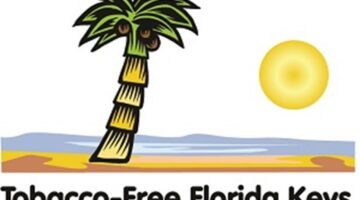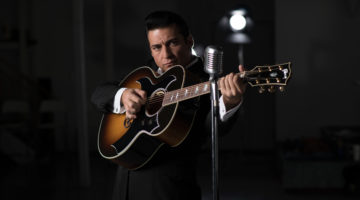2016 prospects treasure opportunity of their campaign launch
LISA LERER, Associated Press
KEN THOMAS, Associated Press
WASHINGTON (AP) — In a presidential campaign, you only get one Opening Day.
For Ted Cruz, it was a simple speech on a college campus: no notes, no teleprompter — and no choice for the students required to be there. Rand Paul packed a hotel ballroom with loyalists and dazzled them with videos and goofy campaign swag.
Up next is Marco Rubio, who appears ready to enter the race Monday and will surely spend the weekend wondering if Hillary Rodham Clinton will ruin his moment with a Sunday night message that she’s getting in, too.
“No matter when you do it, you have the problem of butting against somebody else, and if that somebody else is Hillary Clinton, it’s going to take a lot of the air out of the room,” said John Brabender, an adviser to expected GOP candidate Rick Santorum.
For what’s expected to be a field of as many as two dozen candidates, the formal announcement sets the stage for what they hope will be a triumphant march to the White House. Most are carefully choreographed, some struggle to draw attention, and each sends a signal to voters about whether they’re watching a contender or just another soon-to-be has-been.
“It’s the one part of the campaign, besides picking a vice president, that the candidate can totally control,” said Scott Reed, a Republican strategist who served as Bob Dole’s 1996 campaign manager. “They set the tone.”
For Rubio, the son of Cuban immigrants, that meant weeks of planning for a launch expected to include Jumbotrons and a diverse audience of supporters at downtown Miami’s iconic Freedom Tower, the first stop for tens of thousands of fleeing Cuban exiles during the 1960s and 1970s.
The event is officially billed as a “big announcement” to stoke anticipation about Rubio’s decision on whether to run for president or seek re-election to the Senate. For the past week, Rubio has teased supporters on social media, including running a contest to win a trip to the event.
He’s also asking them to sign up for an email to get first word of his announcement and is selling tickets to the event for $3.05 (Miami’s area code is 305) in an effort to capture names, addresses and other information about potential voters and campaign donors.
Clinton is taking a decidedly different approach. The lead-up to her campaign kickoff is a quiet one — no social media hints or off-the-record tips on where to show up with a satellite truck. She may get in with an online message, followed by a series of smaller, more intimate events across the country, according to aides. They aren’t worried that Rubio’s timeline — or any other announcement — would cut into coverage of their long-awaited event.
Rubio’s aides were far more cognizant about the possibility that Clinton could release her video Sunday night, upstaging their meticulously scripted event. After some debate, Rubio and his team decided to stick with their plan, figuring a dueling announcement might actually work in their favor, allowing them to pocket an early fundraising boost by arguing he would be a strong rival to run against Clinton.
Side-by-side media coverage of the two candidates would draw a beneficial contrast, argued another top aide, between a woman they see as an aging icon from the 1990s and a dynamic Hispanic who is expected to have a rowdy rally in Miami.
That was Paul’s thought, too. His team hoped Clinton would launch before their debut, allowing him to immediately begin campaigning as though it were the general election. Instead, he found himself answering questions about his temperament after being unable, or unwilling, to detail his policy positions in several contentious interviews.
Aides to Clinton, Rubio and Paul all spoke on condition of anonymity in order to discuss internal campaign deliberations.
While a strong launch hardly preordains campaign success, a smart debut can reap more than media buzz. Cruz raised $4 million in the eight days after his speech formally announcing his candidacy. He was the first to get in, too, avoiding what are likely to be diminishing returns as the field grows larger.
“They’re going to come fast and furious,” Brabender said. “At some point it’s going to be increasingly hard to draw out a headline.”
Deciding on timing isn’t just about avoiding collisions with other candidates or positioning for fundraising. Former Texas Gov. Rick Perry made his debut in 2012 just six weeks after his team started preparing for his run.
Four years later, Perry has spent months visiting early primary states, boning up on policy and carefully plotting his entry into the race.
“The timing of his entry into the race did not provide enough time to mount a successful campaign organization for the long haul,” said Ray Sullivan, Perry’s former communications director.
Yet even with enough time to plan, success isn’t guaranteed. Former Utah Gov. Jon Huntsman Jr.’s campaign launch in 2011 sought the patriotic backdrop of the Statue of Liberty in the same Jersey City, N.J., park where President Ronald Reagan opened his 1980 general election campaign.
But the images of Huntsman were marred by a tour boat that passed by during his speech and planes buzzing overhead. His campaign never caught on with voters.
“Campaign launches can make or break a Presidential Campaign. Trust me!” his daughter, MSNBC host Abby Huntsman, recently wrote on Twitter. “How I wish we could redo that day for team Huntsman in 2012.”
[livemarket market_name="KONK Life LiveMarket" limit=3 category=“” show_signup=0 show_more=0]








No Comment